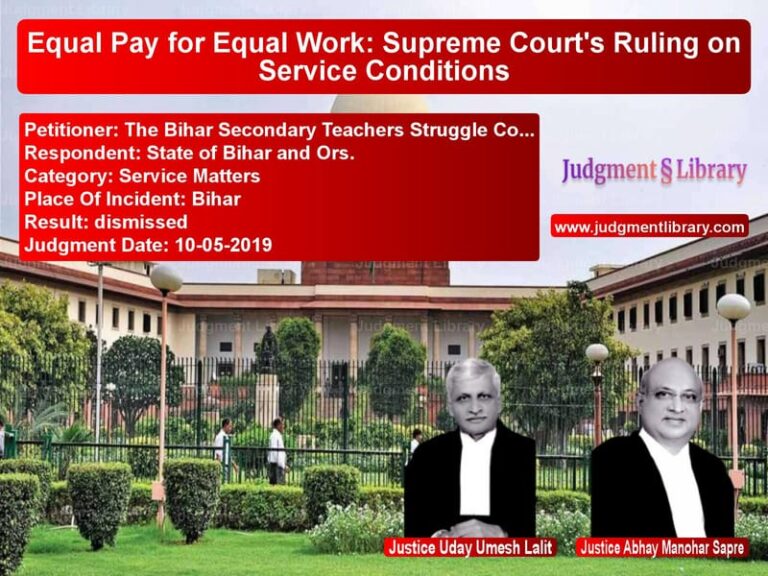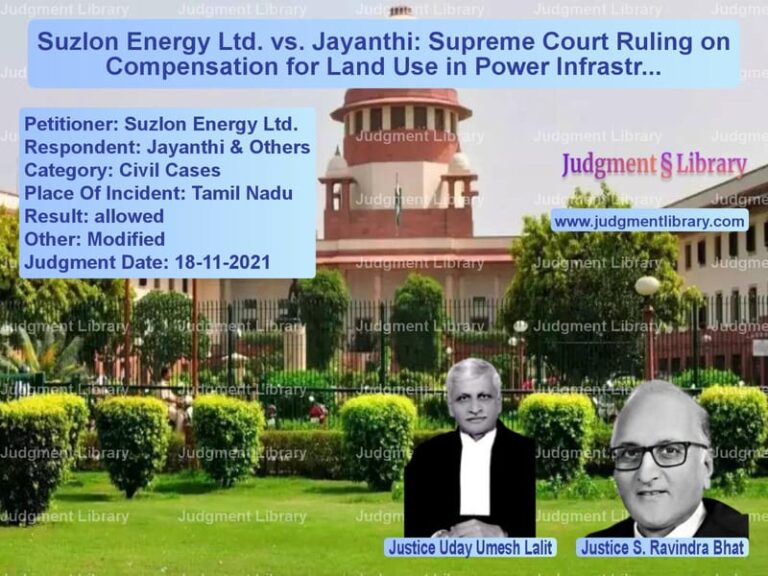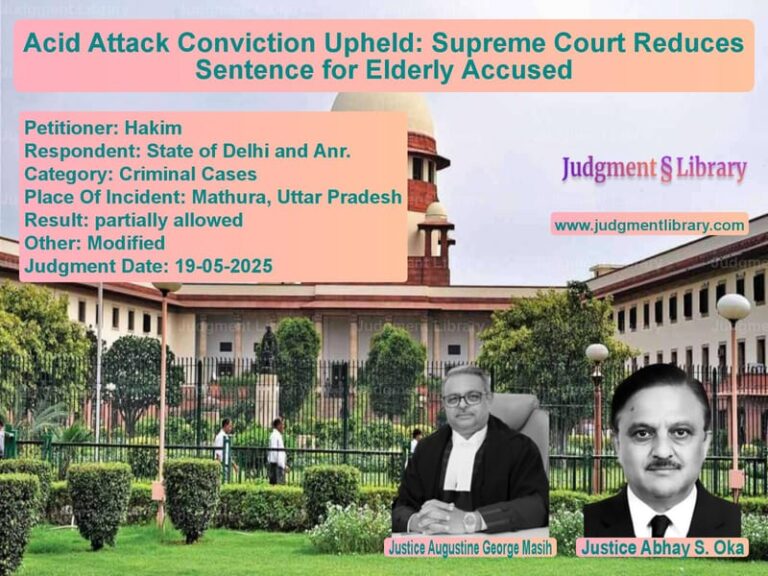Supreme Court Revises Conviction in Rajasthan Murder Case: Key Takeaways
The Supreme Court of India recently delivered a crucial judgment in the case of Birbal Nath v. State of Rajasthan, altering the convictions of the accused from murder under Section 302 IPC to culpable homicide not amounting to murder under Section 304 Part I IPC. This ruling highlights the importance of considering circumstantial evidence, witness credibility, and the principles governing premeditated attacks.
Background of the Case
The case originated from an incident on 22nd May 2001 in Nagaur, Rajasthan, where an attack led to the death of one person and grievous injuries to another. The accused were initially convicted by the Trial Court under Sections 302, 307, 323, 324, 325, 447, 147/148 read with Section 149 of the IPC. However, the Rajasthan High Court overturned the murder conviction, reducing the charges and sentences. The complainant and the State of Rajasthan challenged this decision before the Supreme Court.
Read also: https://judgmentlibrary.com/supreme-court-restores-bail-of-purushothaman-high-courts-order-quashed/
Prosecution’s Version
According to the prosecution:
- On the afternoon of 22nd May 2001, while the victim Chandernath and his wife Rami (PW-2) were working in their agricultural field, seven armed men attacked them.
- The accused were identified as Jethnath (axe), Dhurnath (dang), Meghnath (farsi), Rughnath (shovel), Babunath (dang), Malanath (axe), and Devnath (dang).
- Rami and other eyewitnesses testified that the attack was unprovoked and that the accused inflicted multiple injuries on Chandernath, who succumbed to them while being transported to the hospital.
High Court’s Findings
The Rajasthan High Court, in its judgment dated 8th August 2007, overturned the murder conviction, reasoning that:
- The discrepancies in Rami’s (PW-2) statements before the police (under Section 161 Cr.PC) and her court testimony raised doubts about the premeditation of the attack.
- The incident appeared to be a sudden altercation rather than a planned assault.
- Since two accused had minor injuries, it indicated a possible free fight between both parties.
Supreme Court’s Analysis and Judgment
The Supreme Court, after reviewing the evidence, found that:
- PW-2 Rami was an injured eyewitness whose presence at the scene was natural and credible.
- Minor contradictions in statements do not automatically discredit a witness, especially an injured witness.
- There was no substantial evidence supporting the claim that the accused had sustained injuries in a “free fight.”
- However, considering the contradictions in the case, the attack could be categorized under Exception 4 to Section 300 IPC (culpable homicide not amounting to murder), as it was not premeditated but occurred in the heat of passion upon a sudden quarrel.
Thus, the Supreme Court altered the conviction from murder (Section 302 IPC) to culpable homicide not amounting to murder (Section 304 Part I IPC), sentencing the accused to seven years of rigorous imprisonment. The conviction under Section 307 IPC was also modified to Section 308 IPC, with a three-year rigorous imprisonment sentence.
Key Takeaways from the Judgment
- Credibility of Injured Witnesses: The court reaffirmed that injured eyewitnesses hold high evidentiary value and their testimonies should not be disregarded due to minor contradictions.
- Understanding Contradictions in Statements: Statements given to police under Section 161 Cr.PC cannot be treated as substantive evidence but can only be used for contradictions. Courts should carefully assess whether such contradictions impact the credibility of a witness.
- Application of Exception 4 to Section 300 IPC: If an attack is sudden and lacks premeditation, but leads to death, it falls under culpable homicide not amounting to murder.
- Role of Medical Evidence: The court scrutinized medical reports, questioning the credibility of defense witnesses who attempted to show injuries on the accused.
- Judicial Discretion in Sentencing: The Supreme Court demonstrated a balanced approach by reducing the conviction to Section 304 Part I IPC while ensuring adequate punishment.
Conclusion
The Supreme Court’s ruling in this case underscores the importance of judicial scrutiny in assessing evidence, especially in cases involving violent altercations. By striking a balance between the severity of the offense and mitigating circumstances, the judgment ensures justice while reaffirming the principles governing criminal liability in sudden quarrels.
Petitioner Name: Birbal Nath.Respondent Name: State of Rajasthan & Ors..Judgment By: Justice Sanjay Kishan Kaul, Justice Sudhanshu Dhulia.Place Of Incident: Nagaur, Rajasthan.Judgment Date: 30-10-2023.
Don’t miss out on the full details! Download the complete judgment in PDF format below and gain valuable insights instantly!
Download Judgment: birbal-nath-vs-state-of-rajasthan-&-supreme-court-of-india-judgment-dated-30-10-2023.pdf
Directly Download Judgment: Directly download this Judgment
See all petitions in Murder Cases
See all petitions in Attempt to Murder Cases
See all petitions in Custodial Deaths and Police Misconduct
See all petitions in Judgment by Sanjay Kishan Kaul
See all petitions in Judgment by Sudhanshu Dhulia
See all petitions in partially allowed
See all petitions in Modified
See all petitions in supreme court of India judgments October 2023
See all petitions in 2023 judgments
See all posts in Criminal Cases Category
See all allowed petitions in Criminal Cases Category
See all Dismissed petitions in Criminal Cases Category
See all partially allowed petitions in Criminal Cases Category







